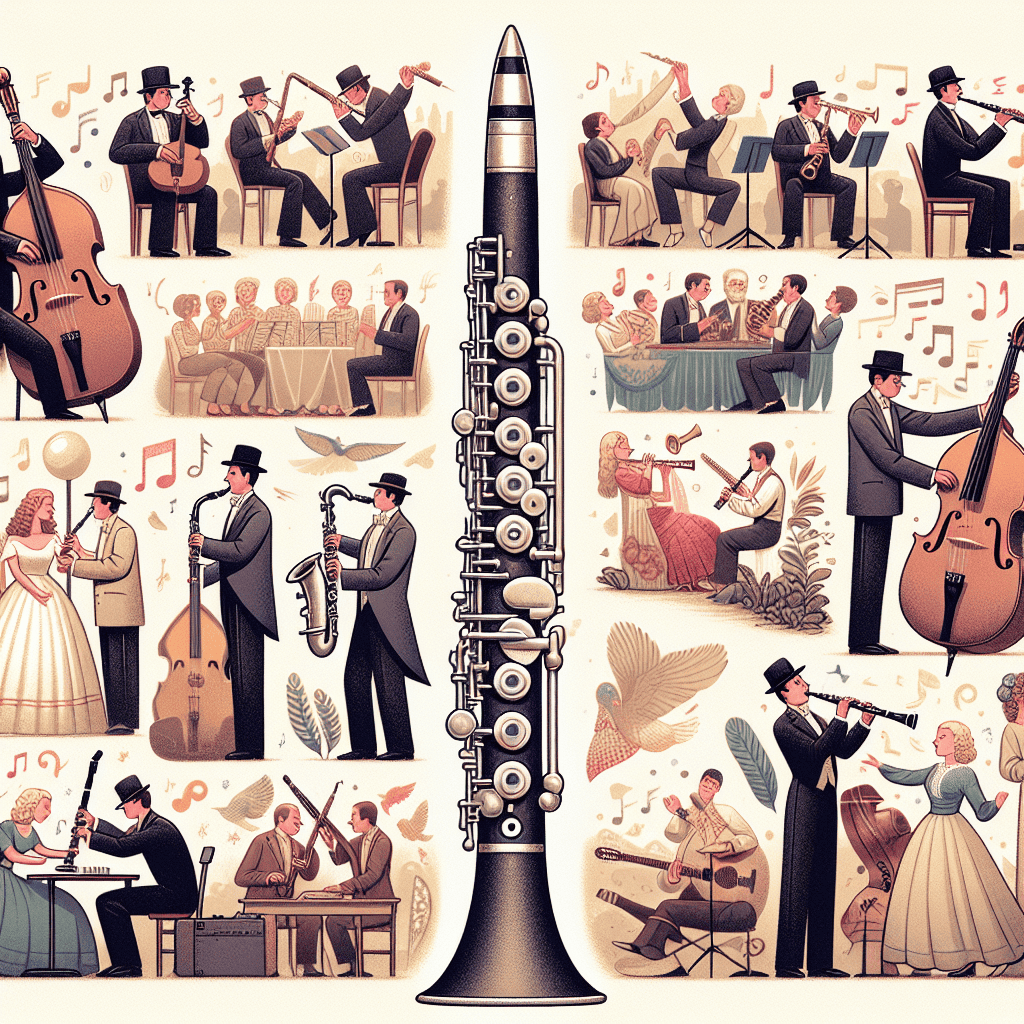If you're a clarinet enthusiast or a music student looking to wow your teacher with some cool clarinet facts, you're in the right spot! The clarinet world is as fascinating as it is melodious. Let's explore some fun facts about this amazing instrument!
A Rich History
The clarinet, with its unique sound and style, has a rich history and a vibrant presence in the music industry. This instrument has been around since the late 17th century, thanks to a German instrument maker named Johann Christoph Denner. Denner wasn't trying to invent something new; he was just improving the chalumeau, a popular woodwind instrument of the time. Little did he know, he would end up creating a musical marvel that would captivate audiences for centuries!
The Name “Clarinet”
Did you know that the name “clarinet” comes from the Italian word ‘clarino', which means trumpet, and the suffix ‘et', meaning little? So, a clarinet is essentially a ‘little trumpet'. But don't let the name fool you. The range of a clarinet is far from little. In fact, it's one of the few instruments that can play over four octaves!
The Clarinet Family
Speaking of range, the clarinet family is quite extensive. There are many types of clarinets, each with its own distinct sound and range. Here's a quick look:
| Clarinet Type | Range | Common Use |
|---|---|---|
| B? Clarinet | E3 to C7 | Most common, used in orchestras and bands |
| Bass Clarinet | D?2 to G5 | Orchestral and jazz music |
| E? Clarinet | G3 to E?7 | Orchestral music, often for high passages |
| Contrabass Clarinet | D?1 to D?5 | Large ensembles, for very low notes |
Each member of the family brings a unique color and texture to the ensemble, making the clarinet an incredibly versatile instrument.
Versatility in Music Genres
The versatility of the clarinet extends beyond its family. The instrument is well-represented in a variety of music genres, from classical and jazz to folk and pop. One of the most celebrated clarinet players of all time, Benny Goodman, was known as the ‘King of Swing'. His improvisational genius brought the clarinet to the forefront of the jazz world. On the other side of the spectrum, Mozart was one of the first composers to write extensively for the clarinet, recognizing its expressive potential in classical music.
Engineering Brilliance
So far, we've talked about the clarinet as a musical tool, but did you know it's also a work of engineering brilliance? A clarinet is made up of several parts, each with a specific role in producing sound. The mouthpiece, the reed, the ligature, the barrel, the upper joint, the lower joint, and the bell all work together to create the instrument's unique sound. The intricate craftsmanship involved in making a clarinet is truly admirable.
Clarinet Parts and Their Functions
- Mouthpiece: Where the reed is attached and the player blows
- Reed: Vibrates to produce sound
- Ligature: Holds the reed in place on the mouthpiece
- Barrel: Connects the mouthpiece to the upper joint
- Upper Joint: Contains keys and tone holes for the left hand
- Lower Joint: Contains keys and tone holes for the right hand
- Bell: Amplifies and projects the sound
Materials Used
And while we're on the topic of making clarinets, let's touch upon the materials used. Most professional clarinets are made of Grenadilla wood, prized for its density and fine grain. However, student models are often made of plastic or hard rubber. While the material can impact the tone and durability of the instrument, a skilled player can make music sing on any clarinet!
A Unique Term for a Group
One last fact to impress your teacher: Clarinetists have a unique term for their group – a ‘clattering'. So next time you see a group of clarinetists, you can show off your knowledge by calling them a clattering of clarinets!
The clarinet is a fascinating instrument with a rich history, versatile range, wide presence in various music genres, and complex construction. So, next time you pick up your clarinet or listen to a piece of clarinet music, remember these fun facts and appreciate the marvel that is this instrument.







